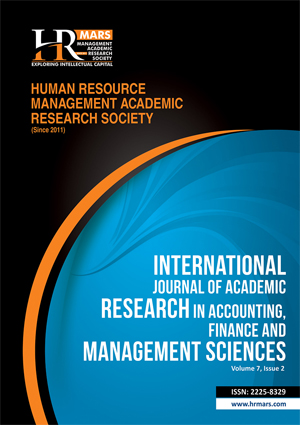User satisfaction has been used as an indicator for measuring the success of the organization's information systems, especially human resource information management activities. Globally, businesses spend a lot of money ensuring the effectiveness of their online information systems. The present study aimed to provide a comprehensive analysis related to user satisfaction with the Human Resource Management System (HRMIS 2.0) in a government agency in Malaysia namely Akademi Latihan Pertahanan Awam Malaysia (ALPHA), Selangor, Malaysia through a quantitative research method. This helps in determining the department’s level of adoption and acceptance of technology. A total of 108 valid survey questionnaires were collected among government servants in ALPHA. The Statistical Package for Social Science (SPSS) was employed to test the proposed research model and hypotheses. The outcomes of this study give a comprehensive and in-depth understanding of the four independent factors (optimism, innovativeness, discomfort, and insecurity), one mediator (perceived ease of use), and the dependent variable, user satisfaction HRMIS in ALPHA. The result indicated that optimism and innovation have a positive relationship with user satisfaction among the staff of ALPHA, but no positive relationship with discomfort and insecurity since in higher perceived ease of use among the employee, the relationship between insecurity and user pleasure was shown to be weaker. Therefore, organizations must manage user satisfaction in relation to HRMIS since it may have a negative impact on the organization's performance as well as raise production costs. According to the findings of this study, ALPHA promotes positive management by learning more about its employees and taking this information into account while establishing the organization's independent variables and HRM practices. This study has a practical and theoretical implications. Practically, the finding can be used to formulate the future government information systems development. Theoretically, this study contributes to the Technology Acceptance Model.
Abbas, R. (2018). Kompetensi Interpersonal Dalam Kalangan Pelajar Universiti Malaysia Pahang (UMP): Satu Analisis. International Journal of Humanities Technology and Civilization, 1, 106-121.
Arifin, M. A., & Tajudeen, F. P. (2020). Impact of human resources information systems in the military environment. Asia Pacific Management Review, 25(4), 198-206.
Anuar, S. N. S., Rahman, A. A. A., & Hassan, M. A. (2020). Hubungan antara kesesuaian tugas dan kejayaan sistem pengurusan maklumat sumber manusia (hrmis) di Kementerian Kewangan, Putrajaya. Jurnal Kemanusiaan, 18(2).
Faiz, D., Siti Norbani, A., Azimatun, N., & Nik Azlan, N. M. (2020). Work performance and its
influencing factors among support staff in Hospital Mersing, Johor. Medicine & Health, 15(2).
Francis, B. R., & bin Ahmad, R. (2021). Relationship between Demographic Factors and Selected Performance Factors with The Perception of The Effectiveness Performance Appraisal System among Royal Malaysia Police officers. Management Research Journal, 10(1), 87-107.
Ibrahim, H., Shamsuddin, F. M., Yusoff, Y. M., & Zin, M. L. M. (2018). The Structural Relationship Between Organisational-Information System Related Support, Technology Self-Efficacy, And End-User Satisfaction With E-HRM. The Journal of Social Sciences Research, 1111-1119.
Ibrahim, H., Shamsuddin, F. M., Zin, M. L. M., & Subramaniam, C. (2018). Understanding user
characteristics as antecedents of technostress towards HRMIS: a mixed-method Study. Jurnal Pengurusan, 53, 37-47.
Jackson, S., & Wong, M. S. (2017). A cultural theory analysis of e-government: Insights from a local government council in Malaysia. Information Systems Frontiers, 19, 1391-1405.
Kamarudzaman, Z. A., & Jambari, D. I. (2021, October). Change Management Framework for
Managing Information Systems Post Adoption in Public Sector. In 2021 International Conference on Electrical Engineering and Informatics (ICEEI) (pp. 1-6). IEEE.
Raman, A., & Nion, N. (2019). Application Use Of Human Resource Management System (Hrmis) In The State Education Department.
Ramadhani, F., & Ilona, D. (2018). Determinants of web-user satisfaction: using technology acceptance model. In MATEC Web of Conferences (Vol. 248, p. 05009). EDP Sciences.
Rathee, R., & Bhuntel, M. R. (2021). A Study on Employee Perception about the Use of E-HRM in IT. SCMS Journal of Indian Management, 18(1), 37-47.
Sarif, S. M., Ramly, S., Yusof, R., Fadzillah, N. A. A., & Sulaiman, N. Y. B. (2018, March).
Investigation of success and failure factors in IT project management. In International Conference on Kansei Engineering & Emotion Research (pp. 671-682). Springer, Singapore.
Sharma, E., & Ahmad, J. (2022). Technology adoption model for HRM practices. International Journal of Technology Enhanced Learning, 14(1), 101-124.
Zahari, A. S. M., Harun, M. A., Hamzah, S. F. M., & Salleh, S. M. (2018). The influence of
Human Resource Management Information System (HRMIS) Application towards Employees Efficiency and Satisfaction. In Journal of Physics: Conference Series (Vol. 1019, No. 1, p. 012077). IOP Publishing.
Zeng, J. (2021, April). Application of Big Data Processing Technology in Human Resource
Management Information System. In Journal of Physics: Conference Series (Vol. 1881, No. 3, p. 032029). IOP Publishing.
Copyright: © 2023 The Author(s)
Published by HRMARS (www.hrmars.com)
This article is published under the Creative Commons Attribution (CC BY 4.0) license. Anyone may reproduce, distribute, translate and create derivative works of this article (for both commercial and non-commercial purposes), subject to full attribution to the original publication and authors. The full terms of this license may be seen at: http://creativecommons.org/licences/by/4.0/legalcode
